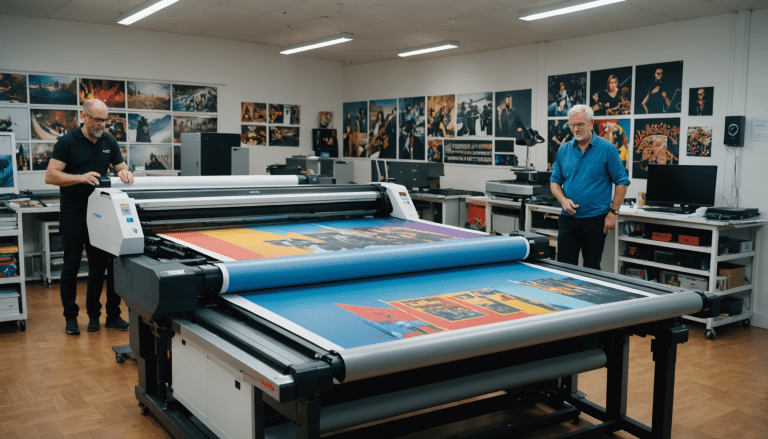
Master Your Office Chair: Tips to Sit Properly & Boost Comfort
Boost your productivity with the RIGHT ERGONOMIC OFFICE CHAIR adjustments. Our guide ensures you MASTER your desk SETUP for ultimate comfort and efficiency.
In today’s office environments, understanding how to sit properly in an office chair is crucial for preventing discomfort and avoiding long-term health issues. Proper sitting posture and ergonomic adjustments not only enhance comfort but also play a significant role in maintaining overall health and productivity.
How do I adjust my office chair for optimal comfort?
To adjust your office chair for comfort and to prevent strain, ensure the chair height allows your feet to rest flat on the floor with your knees at a right angle. Use adjustable backrests to support the natural curve of your spine, and position armrests so your shoulders remain relaxed.
Key Tips for Ideal Office Chair Setup
- Adjust the chair height so your feet rest flat on the floor.
- Ensure the backrest supports your spine’s natural curve.
- Position the armrests to keep your shoulders relaxed.
- Align the monitor at eye level to avoid neck strain.
- Set the desk and chair to facilitate an easy reach to your keyboard and mouse.
- Use a footrest if your feet don’t comfortably reach the floor.

Understanding Ergonomic Office Chairs
When you think of an ergonomic office chair, picture a throne that’s tailor-made just for you, but in the office! These chairs are kitted out with all sorts of adjustable components—think levers and knobs that tweak every angle to fit your unique body shape perfectly. The goal? To align your spine just right, so you can say goodbye to back pain and hello to increased productivity.
Whether you’re long-legged or more on the petite side, an ergonomic chair considers all body types. Adjust the seat height so your feet can flirt with the floor or rest comfortably on it, ensuring your hips and knees are at peace, forming an angle that would make any geometry teacher proud. And don’t forget the armrests—they’re not just for show! They should meet your elbows naturally, so your shoulders can relax without hitching up near your ears.
Having the right chair isn’t just about comfort; it’s about protecting your health in the long run. With the correct setup, your body will thank you, and so will your focus! Dive into our collection of ergonomic wonders at top-rated ergonomic office chairs and find the one that feels like it was made just for you.

Viking Malaga Executive Chair Basic Tilt Bonded leather Fixed Armrest Height Adjustable Seat Black 110 kg

Realspace Draughtsman Chair Permanent Contact Fabric Height Adjustable Black 110 kg 430 x 480 x 1,200 mm
The Essentials of Good Sitting Posture
Good posture isn’t just for show; it’s the secret sauce to avoiding an evening rendezvous with back pain. When sitting, imagine your spine as a stack of perfectly aligned blocks, from your hip to your head. Keep your back straight, shoulders pulled back but relaxed, and eyes level with the top of your monitor to keep neck strain at bay.
Your chair and desk should work together like best buddies at a dance party—perfectly in sync. Adjust your chair so your arms can lightly rest on the surface of the desk without having to stretch or scrunch up. This alignment helps prevent the dreaded carpal tunnel and keeps your wrists happy. And remember, the back of your chair should kiss your spine’s natural curve, supporting the lordosis of your lower back splendidly.
Periodic stretching is like hitting the refresh button for your body. Don’t glue yourself to the chair; get up and move! Stretch your legs, do a few back twists, or just walk around. These mini breaks are golden for your muscle health and blood flow. Keep your posture in check and your body will stay tuned like a well-oiled machine, ready to conquer those long work hours.
Adjusting Your Workstation for Optimal Comfort
Think of your workstation as the cockpit of a plane—it needs to be set up just right to pilot through your workday with ease. Your desk is mission control, and every element from your keyboard to your monitor plays a crucial role. Position your monitor at an arm’s length away, with the top no higher than your eyebrow level to avoid tilting your head up or down.
Your keyboard and mouse should be close enough so you can use them with your arms relaxed, elbows by your side, forming a happy 90-degree angle. This position prevents strain on your forearms and keeps the workflow smooth and pain-free. If your desk feels like it’s either too high or too low, consider an adjustable model or add a keyboard tray to customize the height.
Don’t underestimate the power of a well-placed footrest. If your feet don’t comfortably reach the floor, a footrest can help maintain balance and support, ensuring your legs and lower back aren’t straining. Optimizing your desk setup isn’t just about comfort; it’s about creating a space that enhances your work efficiency and keeps health woes at bay.
How-to Sit Properly Throughout the Day
Let’s face it, sitting like a statue all day isn’t just unrealistic; it’s uncomfortable. The trick to maintaining a good sitting posture isn’t to freeze in place but to adjust your position regularly. Start by sitting at the back of your chair and use its structure to support your spine evenly, from your tailbone up to your neck.
Every couple of hours, reset your posture. Roll your shoulders back, realign your ears with your shoulders, and ensure your feet are flat on the floor or on a footrest. This isn’t just about comfort—it’s about keeping your body alert and your mind focused. Adjust your backrest or seat depth throughout the day as needed, just to add a bit of spice and keep your body guessing!
Remember, the way you sit can influence your whole day. Rotate through different positions and use your chair’s features to support various postures. This keeps your muscles active and your blood flowing, slicing through the fog of a long work session with the precision of a fencer. Keep moving, keep adjusting, and keep your body tuned to the rhythm of your workday.
Common Mistakes and Misconceptions in Office Ergonomics
Office ergonomics isn’t just about having a fancy chair or a sleek desk. One common blunder is setting the chair too high or too low, which can throw your body out of whack quicker than you can say “back pain.” Ensure your chair height allows your feet to rest firmly on the ground or a footrest, with your knees at a comfortable 90-degree angle.
Another myth is the ‘perfect posture’—a rigid, unchanging position. This is a setup for failure. Good posture is dynamic; it involves changing your position frequently to avoid muscle fatigue and stiffness. And no, leaning forward towards your computer screen isn’t helping your focus—it’s just inching you closer to a strained neck!
Lastly, let’s debunk the idea that breaks are for slackers. Short, frequent breaks to stretch and walk around are crucial for maintaining good ergonomics. They rejuvenate your body and refresh your mind, making you more productive, not less. Embrace these breaks as mini productivity boosters that help maintain your health and keep your energy levels high.
| Feature | Description | Importance |
|---|---|---|
| Adjustable Seat Height | Allows feet to rest flat on the floor, aligning knees and hips for optimal posture. | High |
| Lumbar Support | Supports the natural curve of the lower back, reducing strain and enhancing comfort. | High |
| Adjustable Armrests | Helps keep shoulders relaxed and reduces the risk of tension and pain in the upper body. | Medium |
| Swivel Base | Allows for easy movement around the workspace without straining, supporting dynamic sitting and reaching. | Medium |
Conclusion
At Viking, our expertise in workplace solutions aligns perfectly with your need for ergonomic comfort. We’re dedicated to enhancing your office setup to boost productivity and ensure a healthy, sustainable working environment.
Choose Viking for chairs and desks that transform your office into a haven of efficiency and comfort. Let us help you optimize your workspace to suit your ergonomic needs, ensuring lasting health benefits and superior work performance.
Frequently Asked Questions
What is the correct posture for sitting in an office chair?
To maintain correct posture in an office chair, sit back with your spine aligned against the chair’s curve. Ensure your feet are flat on the floor, knees at a right angle, and your computer screen at eye level to prevent neck strain.
How often should I adjust my seat position to avoid back pain?
Adjust your sitting position every 30 to 60 minutes to prevent back pain and enhance blood flow. Use your chair’s adjustable features to alternate between slightly different angles and heights, and take brief walks or stretches to keep your muscles active.
What features should I look for in an ergonomic office chair?
Look for an office chair with adjustable seat height, backrest, and armrests to suit your body’s dimensions. An ideal ergonomic chair should support the curve of your spine, allow your feet to rest comfortably on the floor, and enable your arms to stay parallel to the desk surface.
Can the right sitting position affect overall productivity?
Yes, maintaining an ergonomically correct sitting position can significantly boost productivity. A well-adjusted chair supports long-term comfort, reducing fatigue and increasing focus, thereby enhancing your efficiency at work by minimizing discomfort and potential distractions.










